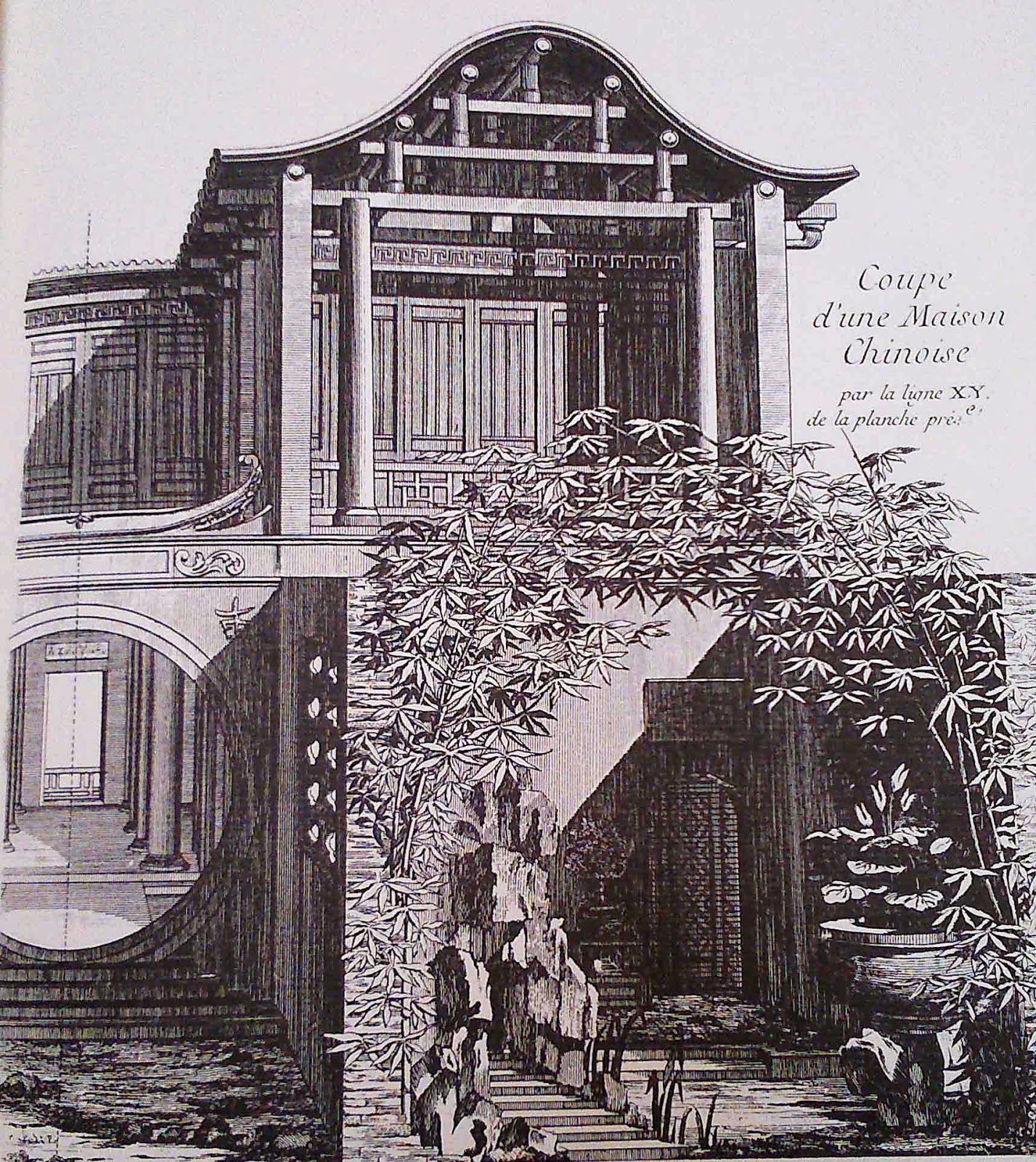Picture: G. Le Rouge. V7. Coupe d'une maison chinoise... Jardins anglo-chinois, Cahier 5, BNF, Paris. Copyright may apply.
New approaches in Chinese garden history, conference abstract
19th June 2015, at the University of Sheffield
Bianca Maria Rinaldi, University of Camerino, Italy
"Translating the Chinese garden: the Western invention of a canon"
Categories are useful tools for
studies in garden history. The Italian renaissance garden, the English
landscape garden, the Picturesque garden, the anglo-chinois garden conjure up easily identifiable garden
typologies, chronologically defined and geographically determined, and they convey
immediately a precise visual image. The category of ‘Chinese Garden’ has blurred
contours, with its inclusive denomination proposes the Chinese garden as
invariable over time. However the definition of a Chinese garden aesthetic
seems to be based exclusively on a study of the gardens of the Jiangnan region,
regardless of any evolution and regional or stylistic differences.
The paper discusses how and when the
concept of the ‘Chinese Garden’ was invented in the West. The gardens of China
have been the focus of Western travelers’ accounts for centuries. During the eighteenth
century, some authors, such as the Jesuit Jean-Denis Attiret, William Chambers
and the Jesuit Pierre-Martial Cibot, made an intellectual effort to interpret
and convey Chinese garden design principles to their Western readers; while
later travellers, particularly British merchants and diplomats, simplified the
design of Chinese gardens in their descriptions and synthesised a formal
vocabulary.
Through an analysis of Western travellers’
accounts of the gardens of China, the paper will show that the late eighteenth
and nineteenth centuries were crucial periods in the Western invention of a
generic ‘Chinese Garden’. It will demonstrate that the restrictions of movement
that Westerners experienced in Qing China, the limited numbers of gardens they were
able to visit, as well as the memory of European chinoiserie, all encouraged simplistic interpretations, so that
Chinese garden aesthetic was associated with recurring elements that seemed to
convey a sort of shared image of Chineseness.
The paper argues
that the Western idea of a general and generic Chinese Garden influenced the
design of Chinese-style gardens built outside China from the 1970s onward, with
their repertoire of typical elements and the lack of the complexity in spatial
arrangement of the gardens in China.
See Bianca's academic profile at the University of Camerino here.
Read a review of her book The Chinese Garden here.
----

No comments:
Post a Comment